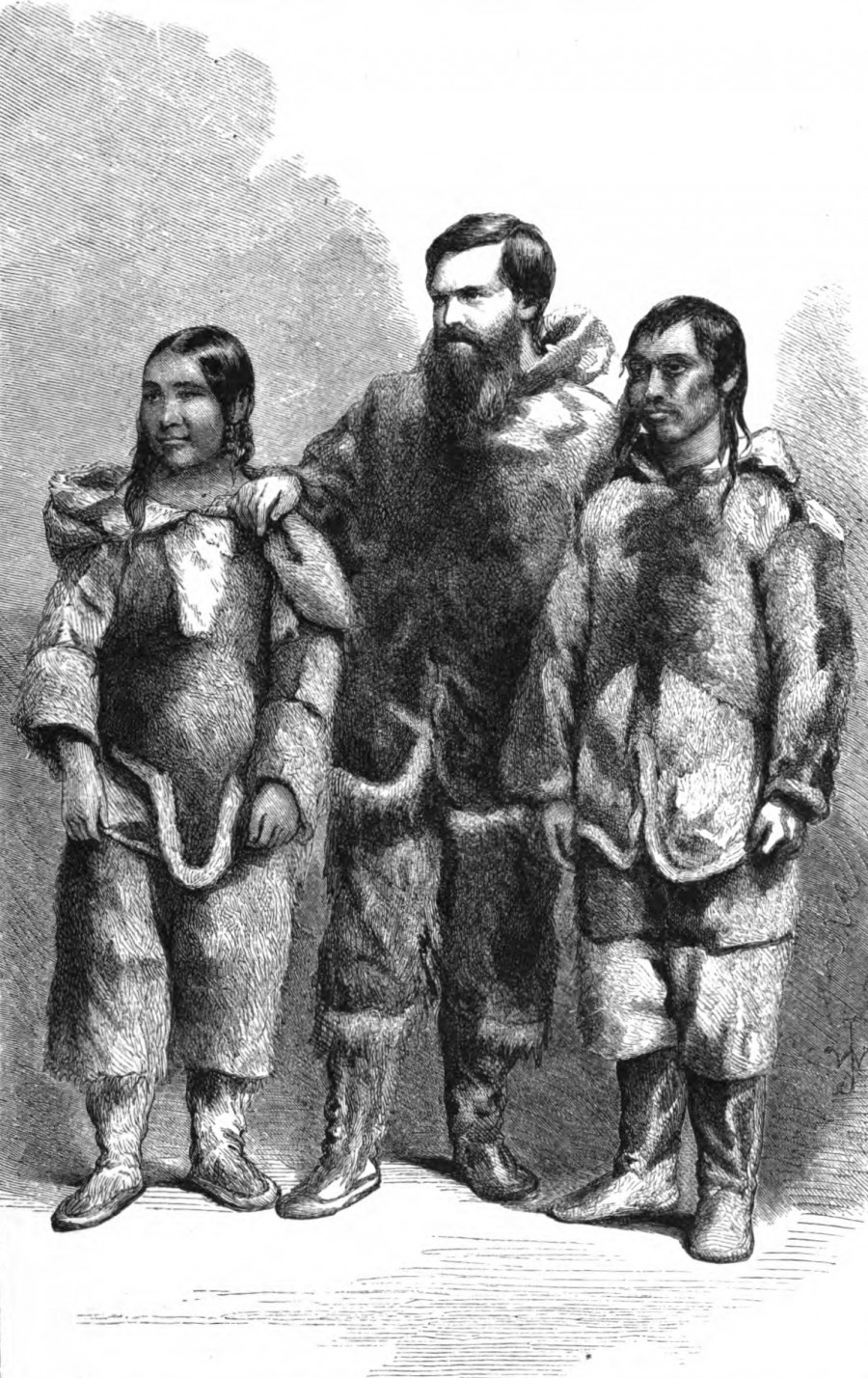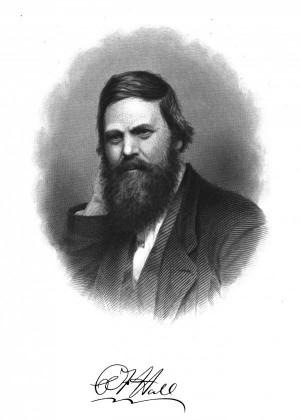Charles Francis Hall was an unlikely candidate for Arctic exploring.
Born in New Hampshire (or possibly Vermont) in 1821, his first career was blacksmithing. Hall arrived in Cincinnati as a young man and set up shop as an engraver in a building near Cincinnati’s Merchants’ Exchange on Fourth Street. His engraving shop specialized in the sort of metal seals that embossed paper, such as notary and governmental documents. He also sold his embossing seals to fraternal lodges and businesses. In addition, he produced wax seals, door plates, wedding stationery, calling cards and sold a line of self-inking stamps.

PDF via Google Books
He read a lot. In particular, Hall followed the ongoing rush of technological innovation from balloon travel to the transatlantic cable to new types of engines. He was entranced by tales of Arctic exploration. He started a newspaper in 1858, the aptly named Cincinnati Occasional (it was published whenever Hall got the urge) to promote the new ideas he read about. The Occasional morphed in 1859 into the Cincinnati Daily Press, which carried more and more reports of Arctic exploration. Hall was especially intrigued by the expedition of British peer John Franklin, who sailed north in 1845 and was never heard from again. Although a few corpses found in 1858 suggested further search was futile, Hall lobbied in the Daily Press [25 May 1859] for another attempt:
“In the chronicles of the ocean, when the wrecked mariner has been cast among its raging billows, an unseen hand has often guided him to a happy shore; and in the annals of mortal suffering, when hearts have sunk, and hands have failed, a meteor ray has often flashed upon the soul, and an arm of strength been commissioned to deliver.”
Hall sold his newspaper and headed north in 1860, leaving his wife (who contributed $27 to the expedition) and two young children in Cincinnati. He got as far as Baffin Island, where he found relics of Martin Frobisher’s 1576 voyage there. He also befriended two native guides, Ebierbing—Hall called him “Joe”—and Tookoolito, known to Hall as “Hannah.” He also learned to adopt native dress and diet to survive in the far north.

Charles Francis Hall
U.S. Government Printing Office, 1879
PDF Via Google Books
Returning to civilization in 1863, Hall published a book about his travels, lectured to raise funds and set out 30 June 1864 in another search for the lost Franklin expedition. From headquarters on the northern shores of Hudson Bay, Hall picked up clues that Franklin and his men may have survived on King William Island. What he learned shocked him to the core: The natives had allowed perhaps 75 of Franklin’s crew to starve to death and had pillaged the bodies for weapons and tools.
Hall retreated south in 1869. Not even a personal appeal from Franklin’s widow could convince him to mount another search party. He was now focused on a higher goal: reaching the North Pole. With government support in the form of $50,000 authorized by Congress and the use of a refitted 400-ton tug, Hall now had the crew, the supplies, and the vessel he needed to plant the American flag at the top of the world.
It was not to be.
Although Hall’s ship set a new record, sailing within 8 degrees latitude of the pole, Hall died only four months into the journey. His crew was stranded and took almost two years to reach civilization. They reappeared with suspicious tales of Hall’s demise.
In apparent good health, Hall took a small group by sledge northward to survey the route ahead. He returned to the ship, drank a cup of coffee, and almost immediately complained about stomach pains. For the next two weeks, confined to his bunk, Hall was often delirious. He repeatedly accused the crew of poisoning him. On November 8, 1871, he died and was buried on the shore of Greenland.
Almost 100 years later, Hall’s remains were exhumed by Chauncey C. Loomis, author of Weird and Tragic Shores: The Story of Charles Francis Hall, Explorer. A pathologist on Loomis’ team discovered that Hall’s body was loaded with arsenic, and loaded in a manner consistent with heavy dosage during two weeks before his death. Suspicion, of course, fell upon Hall’s subordinates, particularly a prickly doctor named Emil Bessels. It is also possible that Hall, who self-medicated during his final illness, may have taken arsenic via some of the quack medicines common at that time. No one was ever charged.
The United States government purchased Hall’s papers from his widow for $15,000, a substantial sum in those days. Miles Greenwood, a wealthy Cincinnati iron manufacturer, headed up a committee to collect additional support for the bereaved family.
Because of Hall, Cincinnati names are scattered around the Canadian Arctic. According to Chauncey Loomis:
“In the cold waters of Baffin Island’s Frobisher Bay is Bishop Island, which is named after Richard M. Bishop, mayor of Cincinnati in the eighteen-sixties and later governor of the state of Ohio. Southeast of Bishop Island, at lat. 63 deg. 16′ N, long. 68 deg. W, is Pugh Island, named after George E. Pugh, a native of Cincinnati who was United States Senator from Ohio in the 1850’s and 1860’s. Jones’ Tower, a mountain at lat. 62 deg. 33′ N, long. 64 deg. 34′ W, is named after George T. Jones, superintendent of the Cincinnati branch of the American Banknote Company. Scattered throughout southeast Baffin Island are other mountains, islands, streams, channels and inlets that bear the names of nineteenth-century Cincinnatians—there is a Cape True, a Wiswell Inlet, a Hamlen’s Bay, a Newton’s Fiord, a Cape Rammelsberg, a Lupton Channel. There is even a bleak stretch of arctic water bearing the unlikely name of Cincinnati Press Channel.”
This article was reposted with permission from Greg Hand, editor of Cincinnati Curiosities




Facebook Comments